Harikanth brings a blend of digital expertise and creative passion, working as an SEO Executive in the Loop Digital team. With a postgraduate qualification in Digital Business & Analytics and 2 years of experience in the digital marketing domain, he’s adept at crafting data-driven strategies to elevate website rankings and online presence. He constantly up-skills himself, keeping pace with the latest Google certifications & research to ensure clients benefit from the most cutting-edge strategies. Beyond the digital realm, Harikanth is a multi-talented individual. He fuels his competitive spirit by participating in marathons and excelling on the tennis court. When seeking a creative outlet, Harikanth expresses himself through dance and poetry. As an avid explorer and archeology lover, Harikanth is fascinated by uncovering the stories of the past through visiting historical sites and learning artefact histories.
Posted on 15/10/2024 by Harikanth Reddy
How to Promote Your New Blog
Creating a successful blog involves more than just writing engaging content; effective promotion is essential to attract readers and build a loyal audience. Whether you’re a new blogger or looking to expand your existing readership, it’s crucial to develop a comprehensive promotional strategy. In this guide, we outline strategic approaches to promote your new blog in the coming years, ensuring you reach the right audience and drive traffic effectively.
Optimise Your Content for Search Engines
Effective search engine optimisation (SEO) is one of the most important factors in growing a blog. Properly optimised content helps search engines index your posts, improving your chances of reaching potential readers organically.
Understand SEO Basics
To start with SEO, it’s essential to grasp the three core aspects:
- On-Page SEO: This focuses on optimising individual blog posts. Use clear, descriptive headlines, include relevant keywords naturally, and ensure proper use of header tags (H1, H2, etc.).
- Technical SEO: Make sure your website is technically sound. This includes having a mobile-friendly design, fast loading times, and ensuring all pages are crawlable by search engines.
- Off-Page SEO: This involves building your blog’s reputation outside of your website, primarily through backlinks from other high-authority sites.
Conduct Keyword Research
Identifying the right keywords is crucial to ranking well on search engines. Use tools like Google Keyword Planner, Ahrefs, or SEMrush to find keywords that are relevant to your niche. Focus on long-tail keywords — phrases that are more specific and less competitive — which often result in higher conversion rates.
1. Google Keyword Planner
Google Keyword Planner is a free tool designed for Google Ads but is also highly effective for SEO keyword research. It helps you find keywords and get data on their search volume, competition, and trends.
Pro Tip: Sort the list by competition to find lower-competition, high-value keywords that may be easier to rank for.
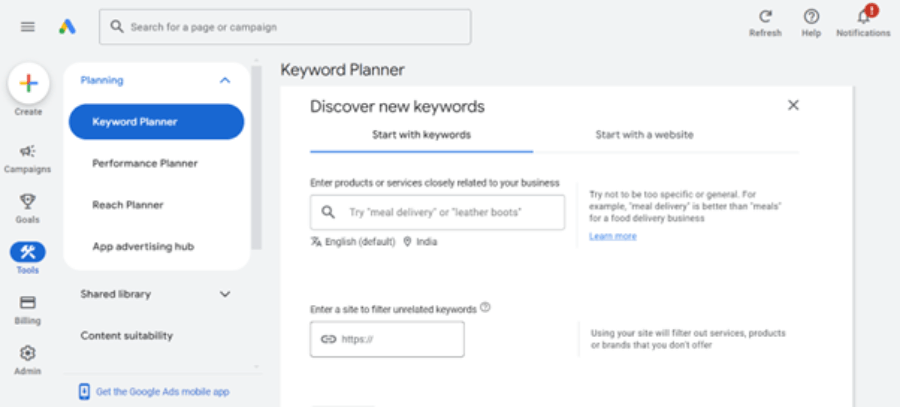
Image Source: Google Keyword Planner
2. Ahrefs
Ahrefs is a comprehensive SEO tool that provides in-depth keyword data, including search volume, keyword difficulty, and click-through rates. It also offers insights into the keywords your competitors are ranking for.
Pro Tip: Use Ahrefs’ “Questions” feature to find keyword ideas framed as questions. These are often long-tail and can lead to featured snippets in search results.
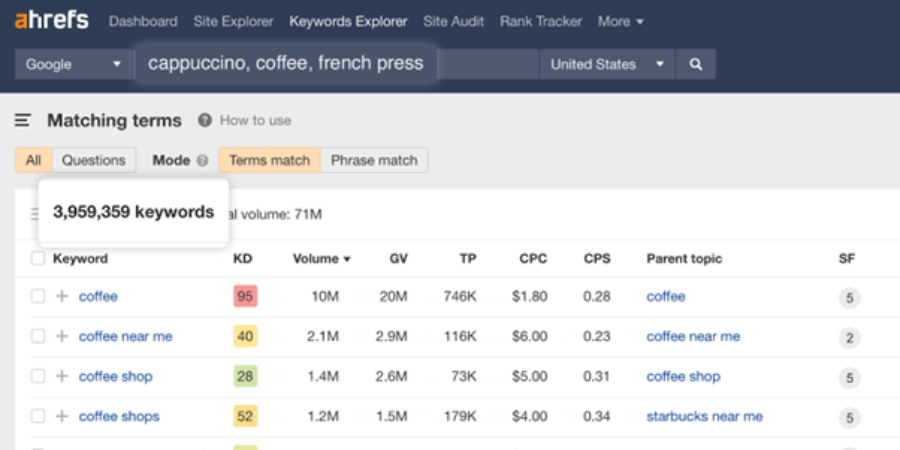
Image Source: Ahrefs Keyword Planner
3. SEMrush
SEMrush offers a wide range of SEO and keyword research tools, making it a go-to platform for finding and analysing keywords that drive traffic. It provides competitive analysis, keyword difficulty, and suggestions for long-tail keywords.
Pro Tip: Use SEMrush’s “Keyword Gap” tool to compare your blog’s keyword profile with competitors, identifying opportunities for long-tail keywords your competition isn’t ranking for.
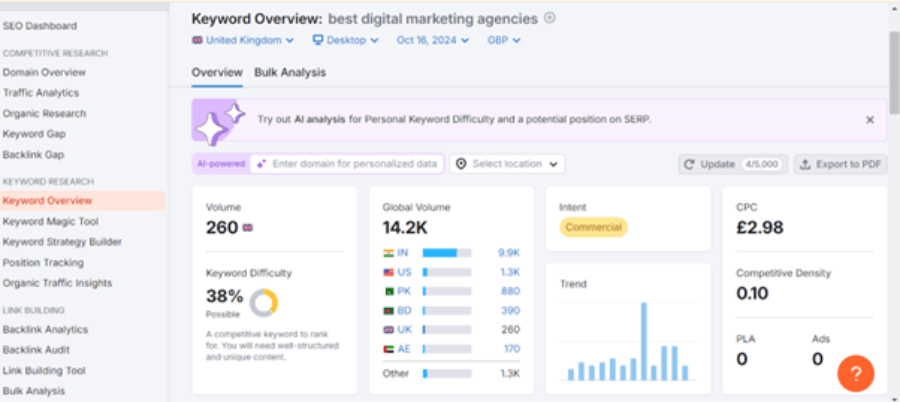
Image Source: Semrush Keyword Overview
Utilise Pillar Pages and Topic Clusters
Pillar pages serve as comprehensive resources on broad topics related to your blog’s focus. By creating these cornerstone posts, you can link to smaller, related posts (topic clusters) that dive deeper into specific subtopics. This not only improves internal linking but also boosts SEO as search engines recognise your site’s structure and authority on a given subject.
2. Leverage Social Media
Social media can be a powerful tool to promote your blog and reach a wider audience. With billions of people active on platforms like Instagram, Twitter, and Facebook, you have the potential to significantly boost your blog’s visibility through social media marketing.
Choose the Right Platforms
Not all social media platforms are suitable for every niche. Research where your target audience spends the most time and focus your efforts there. For example:
- Instagram is ideal for visually driven content like fashion, food, or travel.
- Twitter works well for quick, engaging updates, particularly for industries like tech or media.
- Facebook is great for longer, community-based interactions.
- TikTok is perfect for short, creative videos and viral challenges, making it ideal for industries like entertainment, beauty, and lifestyle.
Share Engaging Content
When promoting your blog on social media, it’s essential to create posts that entice readers without giving away too much. Content marketing is all about strategy. Share snippets of your content, eye-catching images, or thought-provoking quotes. This way, users will be curious to click through to your blog for the full post.
Diversify Your Content Types
People consume content differently. While some prefer reading blog posts, others might engage better with videos, infographics, or interactive content. Mix things up by creating short videos summarising your posts, infographics that explain complex ideas, or even hosting live Q&A sessions related to your latest blog topics.
Engage with Your Audience
Building a community is key to sustaining your blog’s growth. Respond to comments, messages, and mentions on social media to foster a relationship with your readers. Engaging with your audience increases brand loyalty and encourages readers to share your content.
3. Collaborate with Influencers
Working with influencers, especially those relevant to your niche, can significantly expand your reach. Influencers have established audiences who trust their recommendations, and collaborating with them can give your blog credibility.
Identify Relevant Influencers
Look for influencers whose audience overlaps with your target demographic. For example, if you run a food blog, collaborating with a food influencer or chef can drive the right kind of traffic to your site. Tools like BuzzSumo or Upfluence can help you identify key influencers in your industry.
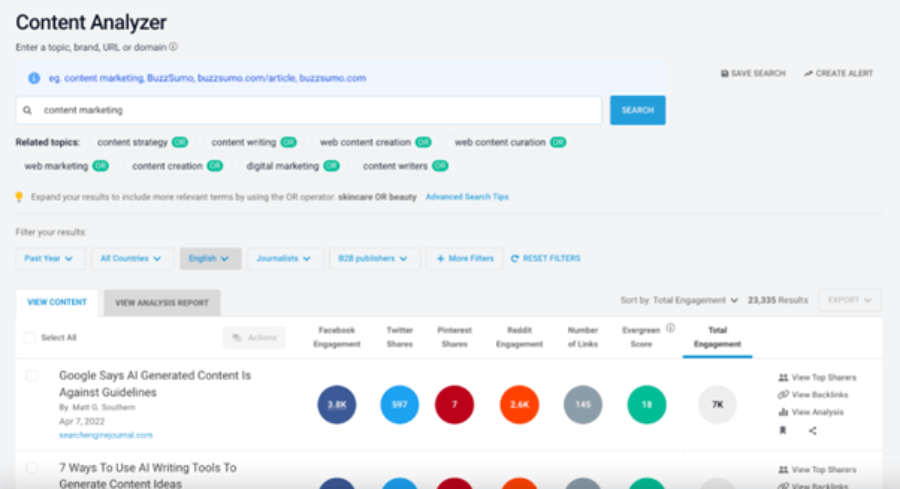
Image Source: Buzzsumo Content Analyser
Consider Micro-Influencers
Micro-influencers typically have smaller but highly engaged followings. They can be more cost-effective than larger influencers, and their audiences often have a higher degree of trust in them. Partnering with a few micro-influencers can deliver excellent results for promoting your blog.
Create Partnership Opportunities
Collaboration doesn’t always have to mean sponsored content. You could work with influencers to co-create a piece of content, run a giveaway, or host an event. For instance, you might interview them for your blog, ask them to contribute a guest post, or run a contest that requires people to visit your blog to participate.
4. Utilise Email Marketing
Email marketing remains one of the most effective tools for engaging with your audience. It allows you to stay in touch with readers, promote new content, and even monetise your blog over time.
Build an Email List
Start building an email list from day one. Encourage visitors to subscribe by offering exclusive content, freebies, or resources such as an e-book or checklist. A strong call-to-action (CTA) on your blog is essential for getting readers to sign up.
Segment Your Audience
Once you have an email list, divide it into segments based on your subscribers’ interests or demographics. This allows you to send more targeted emails, which are more likely to resonate with recipients. For example, if you run a travel blog, you could send different newsletters to those interested in budget travel versus luxury travel.
Create Valuable Content
Ensure that your email newsletters provide value beyond simply promoting your latest blog posts. Share exclusive insights, tips, or behind-the-scenes content that isn’t available elsewhere. This keeps your subscribers engaged and less likely to unsubscribe.
5. Invest in Paid Advertising
Paid advertising can provide an immediate traffic boost, especially if you’re struggling to gain organic traction early on. Platforms like Google Ads, Facebook Ads, and even Instagram Ads allow you to target specific demographics and interests.
Use Targeted Ads
The key to successful paid advertising is targeting the right audience. Use audience insights from platforms like Facebook or Google to create ads that speak directly to your ideal reader. Narrow down your audience based on age, location, interests, and behaviours for more effective campaigns.
Focus on High-Value Content
Instead of promoting all your blog posts equally, focus on your most high-value content—such as comprehensive guides or evergreen articles. These are more likely to attract clicks and shares, giving you better returns on your ad spend.
| Content Type | Description | Target Audience | Intention |
| Comprehensive Guides | In-depth articles that cover a topic thoroughly, often serving as a reference. | Individuals seeking detailed knowledge or solutions. | To educate and establish authority in a niche. |
| Evergreen Articles | Content that remains relevant over time, providing timeless information. | General audience looking for lasting insights. | To attract consistent traffic and shares over time. |
| How-To Content | Step-by-step tutorials that help users accomplish specific tasks. | DIY enthusiasts and learners. | To provide practical assistance and encourage engagement. |
| Infographics | Visual representations of data or information make complex topics easier to understand. | Visual learners and social media users. | To simplify information and enhance shareability. |
| Videos | Engaging visual content that can convey messages more dynamically than text. | Broad audience, especially younger demographics. | To increase engagement and retention through storytelling. |
| Lists | Articles are formatted as lists, summarising key points or tips concisely. | Readers looking for quick insights or tips. | To provide easily digestible content that encourages sharing. |
| User-Generated Content (UGC) | Content created by users that showcases their experiences with a brand or product. | Brand followers and potential customers. | To build trust and authenticity through peer recommendations. |
| Interactive Content | Quizzes, polls, or calculators that engage users actively rather than passively. | Engaged audiences looking for personalised experiences. | To drive interaction and gather user data for targeted marketing. |
| Original Research | Unique studies or findings that provide new insights into a topic or industry. | Industry professionals and researchers. | To establish credibility and attract backlinks from other sources. |
Experiment with A/B Testing
A/B testing involves creating two versions of an ad and seeing which performs better. Test different headlines, images, and CTAs to find the combination that resonates most with your audience.
6. Network within Your Industry
Building relationships with other bloggers and industry professionals can provide valuable opportunities for cross-promotion, guest posting, and even partnerships.
Join Online Communities
Participate in online communities like blogging forums, social media groups, and Reddit threads. These spaces often provide opportunities for collaboration, sharing resources, and even promoting your content.
Attend Events
Industry events, whether online or in-person, offer a chance to meet fellow bloggers, potential collaborators, and experts in your field. Many blogging communities host regular workshops, webinars, and conferences that provide invaluable networking opportunities.
Guest Post on Other Blogs
Guest posting on established blogs in your niche can drive significant traffic to your site. Not only does it expose your blog to a new audience, but it also builds your authority in the industry and creates valuable backlinks that improve your SEO.
7. Monitor Your Progress
One of the most important steps in promoting your blog is regularly monitoring and assessing your progress. Promotion strategies require continuous tweaking and fine-tuning. By tracking your blog’s performance, you can determine what’s working and what isn’t, allowing you to make informed adjustments that optimise your efforts. Here’s how to monitor your progress effectively and adapt your promotional strategy accordingly:
Use Analytics Tools
Analytics tools are invaluable for tracking and understanding your blog’s performance. These tools provide detailed insights into traffic sources, user behaviour, engagement, and conversions. By using these insights, you can pinpoint what aspects of your promotional strategy are yielding results and where there’s room for improvement.
- Google Analytics: This free tool is a must-have for bloggers. It offers comprehensive data on where your traffic is coming from (search engines, social media, referral sites, etc.), which posts are driving the most engagement, bounce rates, and average time spent on pages. You can also track your audience demographics, helping you tailor your content and marketing efforts to suit your readers.
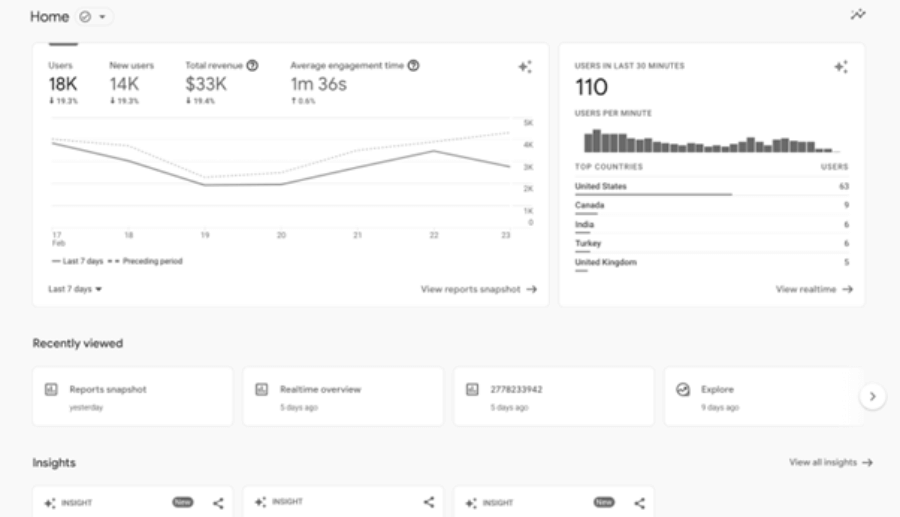
Image Source: Google Analytics Dashboard
- SEMrush: This platform offers more advanced SEO tracking. It shows you which keywords are driving traffic, how your posts are performing in search engine rankings, and which backlinks are boosting your domain authority. SEMrush also provides insights into competitor blogs, helping you benchmark your blog’s performance and discover new promotional opportunities.
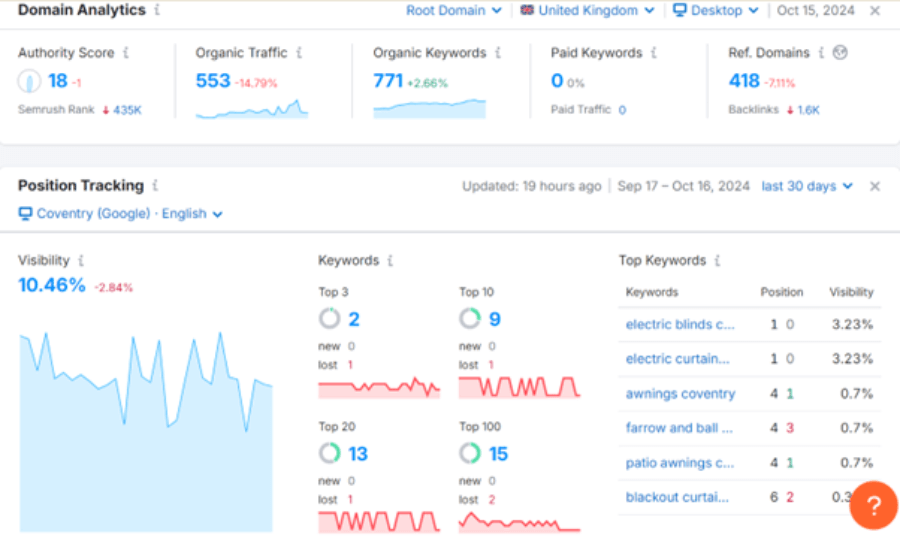
Image Source: SemRush SEO Analytic Dashboard
- Ahrefs: Another powerful SEO tool, Ahrefs focuses on backlink analysis, keyword performance, and site health. By monitoring your domain authority and keyword rankings, you can determine whether your SEO strategies are improving your visibility. Ahrefs is particularly useful for tracking how your backlinks are affecting your search rankings and identifying new outreach opportunities.
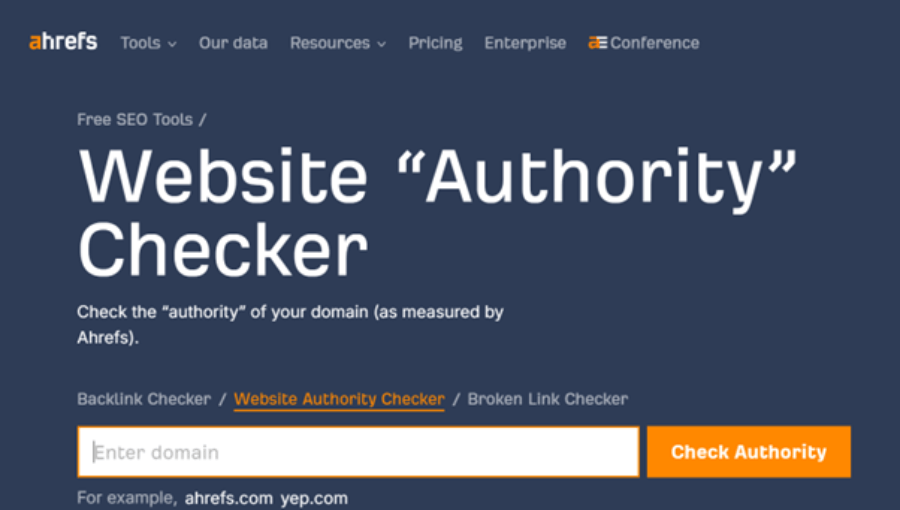
Image Source: Ahrefs domain authority check
- Social Media Analytics: Most social media platforms offer their own analytics dashboards (such as Facebook Insights or Twitter Analytics) that provide insights into audience demographics, post engagement, and follower growth. This data can help you refine your social media strategy to better engage your audience and increase traffic.
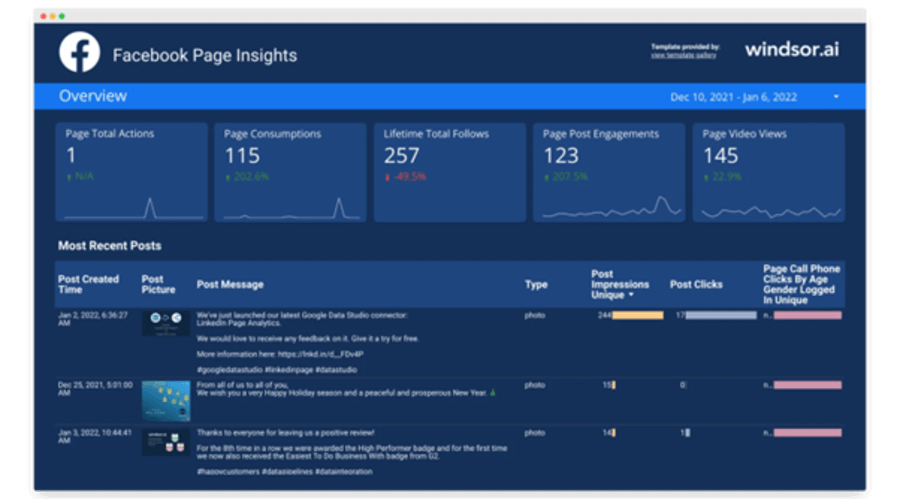
Image Source: Facebook Page Insights
- Email Marketing Tools: If you’re using platforms like Mailchimp or ConvertKit, you’ll have access to email marketing analytics. These tools allow you to track email open rates, click-through rates, and subscriber growth. You can also see which emails are leading to conversions or site visits.
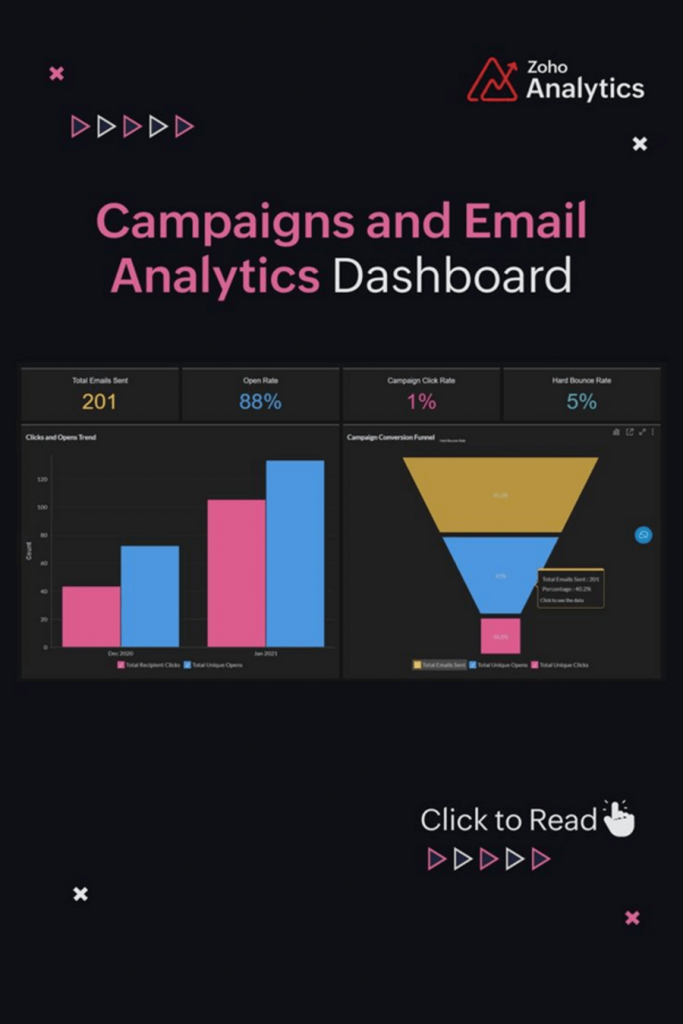
Image Source: Mailchimp email marketing dashboard
Adjust Strategies Accordingly
Regular monitoring isn’t just about collecting data — it’s about acting on it. Once you have insights into what’s working and what isn’t, you should adapt your promotional strategies accordingly. Here’s how to make adjustments:
- Evaluate Traffic Sources: If you notice that most of your traffic is coming from search engines, it’s a sign that your SEO efforts are paying off. In this case, you might want to focus on creating more SEO-optimised content. On the other hand, if traffic from social media is underperforming, it may be worth revisiting your social media strategy. Consider whether you’re using the right platforms, posting at optimal times, or creating content that resonates with your audience.
- Refine Social Media Approach: If certain social platforms aren’t delivering the expected traffic or engagement, it may be time to adjust your approach. You can experiment with different types of content (videos, polls, infographics), post at different times, or focus more on platforms where your audience is more active. If a particular platform consistently underperforms despite your efforts, consider shifting resources to channels that provide better returns.
- A/B Test Your Emails: Low open rates or click-through rates on email campaigns could indicate that your subject lines, content, or frequency aren’t hitting the mark. A/B testing allows you to test different versions of your emails to see which one performs better. For instance, you can experiment with different subject lines, design layouts, or calls to action. Additionally, reviewing the timing and frequency of your emails can help avoid overwhelming your subscribers while keeping them engaged.
- Analyse Content Performance: Look at which blog posts are performing well in terms of traffic, shares, and user engagement (such as comments and time spent on page). If a certain type of content (e.g., how-to guides, lists, or opinion pieces) consistently attracts more readers, consider producing more of that type of content. For underperforming posts, think about whether they could be updated with new information, better optimised for SEO, or repurposed for other platforms.
- Monitor Keyword Rankings: Using tools like SEMrush or Ahrefs, you can track how your keywords are ranking on search engines. If certain keywords are driving significant traffic, create more content around those topics to strengthen your blog’s authority. If you’re not ranking well for targeted keywords, revisit your SEO strategy to ensure you’re optimising your blog posts for those terms.
- Backlink Analysis: Track the quality and quantity of backlinks to your blog. A healthy backlink profile can boost your SEO performance, so if you see a decline in backlinks, it’s time to start outreach efforts again, whether through guest blogging or partnerships.
- Content Refreshing: For posts that have dropped in traffic over time, consider updating them with new information, better formatting, or additional internal/external links. Refreshing content can boost its SEO value and re-engage readers who may not have seen the post when it was first published.
Set Realistic Goals and Benchmarks
To effectively monitor your progress, it’s essential to set realistic goals and benchmarks for your blog’s performance. These could include:
- Increasing organic traffic by 20% over the next six months.
- Gaining 500 new email subscribers within three months.
- Improving your social media engagement rate by 10%.
- Achieving higher domain authority through strategic backlink building.
Setting clear, measurable goals allows you to track your progress more efficiently and make informed adjustments when needed.
Regularly Review and Refine
Promotion strategies are not a one-and-done task. The digital landscape is constantly changing, and what works today might not work tomorrow. For instance, trends in social media algorithms, Google’s search ranking factors, or even audience preferences can shift rapidly. Therefore, regularly reviewing your promotional tactics ensures that your blog stays ahead of the curve.
Make a habit of conducting monthly or quarterly performance reviews. During these reviews, assess your analytics, evaluate your goals, and tweak your promotional efforts accordingly. By staying on top of your blog’s performance, you can maintain its growth trajectory and ensure long-term success.
You are one click away from flawless content marketing!
Unlock your business’s full potential with Loop Digital’s expert content marketing, SEO, and digital growth strategies. Whether you’re looking to improve your website’s ranking, drive more traffic, or create engaging content that resonates with your audience, we’ve got you covered. Our tailored solutions are designed to boost your online presence and help you achieve sustainable growth. Book a free consultation today and discover how we can elevate your brand. Plus, don’t miss out on valuable tips and insights — subscribe to our newsletter for the latest trends in digital marketing! Start growing with Loop Digital now!
Looking for your next opportunity?
Digital marketing careers
We’re always on the lookout for talented individuals to join our ever growing team. If you think you’d be a great match for Loop Digital, we’d love to hear from you.

Join 300+ business owners getting weekly growth strategies - subscribe now.
"*" indicates required fields






